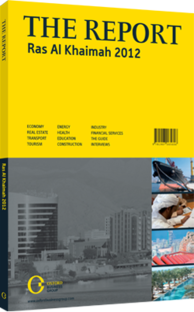Niche potential: Promoting research and development in high-tech industries
Given its relative lack of natural resources, and hydrocarbons in particular, Ras Al Khaimah has had to focus its efforts outside the energy sector, building up a diversified industrial base by making use of a mixture of incentives, infrastructure investment and careful partnerships. Now, the emirate is looking to position itself as a centre for advanced manufacturing and high-tech industries over a 10- to 20-year period. As in other areas, RAK is not looking to take on regional giants such as Saudi Arabia and Abu Dhabi, which have ample resources to fund investment in industrial mega-projects, but rather is looking to form partnerships in niche areas where the emirate can find a real comparative advantage.
SOLAR SOLUTIONS: One of the most obvious of these is solar energy. With an average of 300 sunny days a year, one resource the emirate does have in abundance is sunshine. Moreover, RAK is a good test site for many solar technologies, since the challenging environment – dusty with high humidity – means that products able to withstand RAK’s climate will likely fare well in milder conditions. The Centre Suisse d’Electronique et Microtechnique (CSEM), a private applied research and development (R&D) centre, has maintained a research facility in RAK since 2005 with the mission to test existing technologies and integrate them into sustainable solutions. The centre is non-profit, with any monetisation to be undertaken by spin-off companies, and it cooperates closely with the RAK Investment Authority (RAKIA). Manoj Kumar Pokhrel, senior R&D engineer in sustainable energy at CSEM-UAE, said, “Every year we propose a selection of projects to RAKIA and they have always agreed on the most suitable for RAK. Despite mutual trust, each project is checked and followed up by RAKIA.”
Currently, CSEM-UAE is testing so-called solar islands – arrays of solar panels that can be positioned on land or else floated offshore. The technology is applicable to three main functions: electricity generation, desalination of seawater and cooling buildings, and can either be applied for all three functions, or just one or two of them.
With air conditioning accounting for some 70% of electricity demand in the Gulf, solar cooling holds particular potential. Moreover, the technology can either be used off grid, or scaled up to supply larger projects. Given that the Northern Emirates have faced electricity shortages in recent years, there could be potential to power larger developments that have yet to be connected to the main grid. The flip side of green energy generation is energy conservation, and CSEM is also testing various building materials and paints to measure how they can help reduce a building’s energy consumption. Many of these products could be produced locally in the emirate.
Another area the CSEM is considering is wind power. Although wind levels at the coast were found to be insufficient to make generation viable, the Hajjar Mountains in the emirate rise to 1500 metres, and wind levels at higher altitudes are being tested to see if pilot wind projects might be viable there.
SMART & HIGH-TECH: Another Swiss institution undertaking research in RAK is the École Polytechnique Fédérale de Lausanne, which is researching smart-grid technology in the emirate, while in April 2011, RAK hosted the 17th World Micromachine Summit, which deals with micro-electromechanical systems (also known as “mems”), tiny electronic components increasingly used in a variety of applications, including mobiles phones and photovoltaic panels.
However, in addition to research centres, manufacture of high-tech products has also begun in RAK. Falcon Technologies International, a RAK-Swiss joint venture in optical media that specialises in archival technology, commenced operations in 2005 and was the first firm outside Japan to produce Blu-ray discs. According to CEO Roberto Santini, “Over the long term there is potential for us to act as a seed for other high-tech industries in RAK. By demonstrating what is possible to achieve here, we could create a ripple effect.”
You have reached the limit of premium articles you can view for free.
Choose from the options below to purchase print or digital editions of our Reports. You can also purchase a website subscription giving you unlimited access to all of our Reports online for 12 months.
If you have already purchased this Report or have a website subscription, please login to continue.

